AMD/Xilinx

More from the Category
Advanced Micro Devices (AMD) is a global leader in semiconductor technology and computing solutions. This pillar page will examine AMD’s rich history, innovative products, and impactful contributions, which have solidified its position as a key player in the tech industry.
History of Innovation
With a legacy spanning over five decades, AMD has been at the forefront of computing advancements since its founding in 1969. From its humble beginnings, the company has grown into a powerhouse of innovation, consistently pushing the boundaries of what is possible in high-performance computing and delivering solutions that empower individuals, businesses, and industries worldwide.
At the core of AMD’s philosophy is a commitment to redefine the limits of computing and visualization technologies. Their mission is to create immersive experiences and unleash the full potential of computing capabilities. By leveraging their expertise, AMD aims to transform the way we live, work, and play by providing innovative, differentiated technology solutions.
Throughout its history, AMD has achieved remarkable milestones that have shaped the industry and set new standards for performance and innovation. From the development of the first x86-compatible microprocessor to pioneering the introduction of 64-bit processing and high-performance graphics cards, AMD has consistently challenged conventions and delivered groundbreaking solutions that have disrupted the market.
Learn more about the history of AMD
Commitment to Redefining Computing and Visualization
AMD’s product portfolio encompasses a wide range of cutting-edge technologies. At the heart of it lies their exceptional processors (CPUs), renowned for their performance, power efficiency, and advanced multi-core processing capabilities. Whether you’re a gamer seeking high frame rates, a content creator demanding uncompromised productivity, or a professional relying on robust computing power, AMD Ryzen™ processors offer unrivaled performance and value, catering to diverse computing needs.
In addition to processors, AMD’s graphics cards (GPUs) exemplify their commitment to stunning visual experiences. The Radeon™ GPUs provide gamers with immersive graphics, enabling realistic gaming experiences and captivating virtual reality (VR) environments. Moreover, these powerful GPUs empower content creators to bring their visions to life with unparalleled visual fidelity and rendering capabilities.
AMD’s Accelerated Processing Units (APUs) are another hallmark of their product portfolio. These innovative chips seamlessly integrate powerful CPU and GPU capabilities into a single solution, offering a balance between performance and power consumption. APUs have become a popular choice for laptops, desktops, and compact form factors, delivering efficient computing and graphics processing capabilities in a single package.
Beyond consumer computing, AMD’s server and data center solutions with EPYC™ processors have revolutionized the capabilities of modern data centers, cloud computing, and enterprise-grade computing. With exceptional performance, scalability, and advanced security features, AMD is empowering businesses with the tools they need to handle the most demanding workloads, drive innovation, and achieve new levels of efficiency.
AMD’s impact extends far beyond traditional computing domains. Their innovations have left a mark in industries such as gaming and entertainment, high-performance computing (HPC), artificial intelligence (AI), machine learning (ML), autonomous vehicles, cloud computing, and blockchain technologies. AMD’s commitment to driving progress in these areas is evident through their partnerships and collaborations with leading OEMs, cloud service providers, and academic institutions, fostering a vibrant ecosystem of technological advancements.
Moreover, AMD recognizes the importance of sustainability and is dedicated to environmentally responsible practices. Through green initiatives, energy-efficient solutions, and comprehensive recycling programs, AMD strives to minimize its environmental footprint and contribute to a greener future, ensuring that technological progress aligns with ecological responsibility.
Milestones and Industry Impact
AMD is at the forefront of the rapidly evolving fields of artificial intelligence (AI) and machine learning (ML), leveraging its high-performance computing expertise to drive advanced AI applications. These innovations have the potential to transform industries such as healthcare, finance, and autonomous systems. By developing optimized hardware and software solutions, AMD accelerates AI-driven innovation, enabling businesses to extract insights, make data-informed decisions, and maintain a competitive edge.
AMD is also making significant strides in autonomous vehicles. Its advanced computing platforms support the development of intelligent driving systems by combining high-performance processors, robust graphics capabilities, and AI acceleration. This integration contributes to safer, more efficient, and enjoyable transportation experiences.
As a pioneer in high-performance computing (HPC), AMD empowers scientific discovery through support for engineering simulations, computational modeling, and data-intensive research. Its powerful CPUs and GPUs deliver the scalability needed to address complex challenges across disciplines, from climate modeling and weather forecasting to drug discovery and genetic analysis. By advancing these capabilities, AMD plays a critical role in addressing global challenges and enhancing quality of life.
Collaboration and partnerships are central to AMD’s innovation strategy. Through close cooperation with OEMs, cloud providers, academic institutions, and research organizations, AMD cultivates a vibrant ecosystem that fosters knowledge exchange, co-creation of solutions, and rapid adoption of emerging technologies across industries.
Built on a legacy of excellence and innovation, AMD continues to redefine what’s possible in computing. From powerful processors and graphics cards to sustainable server solutions, the company enables immersive digital experiences, drives technological breakthroughs, and fosters global collaboration. With this ongoing commitment, AMD is shaping the future of computing and empowering individuals and businesses to reach their full potential.
Xilinx’s FPGA Lines
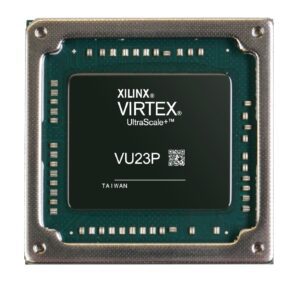
Viretx UltraScale+
Viretx UltraScale+ FPGAs are high-end devices designed to meet the demands of the most complex and performance-critical applications. They offer the highest logic density, the highest memory bandwidth, and the highest transceiver bandwidth of all Xilinx FPGA families. With an emphasis on advanced features and capabilities, Viretx UltraScale+ devices are ideal for applications such as data centers, networking, and high-performance computing.
Key Features:
• Advanced 16nm process technology.
• UltraRAM for on-chip memory with high capacity and performance.
• Versatile transceivers supporting multiple protocols at high data rates.
• High-speed serial I/O interfaces for fast data transfer.
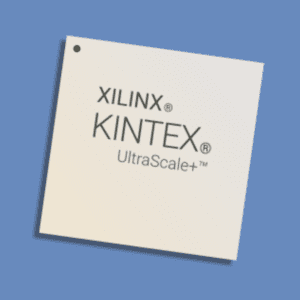
Kintex UltraScale+
Kintex UltraScale+ FPGAs are a mid-range FPGA family that strikes a balance between cost-effectiveness and high performance. They are designed for applications requiring high-performance processing, adaptable hardware acceleration, and excellent power efficiency. Kintex UltraScale+ devices are commonly used in applications such as 5G wireless, aerospace, and defense.
Key Features:
• Scalable 16nm process technology.
• High-performance processing with adaptable engines.
• Integrated high-speed transceivers for fast data communication.
• DSP slices for signal processing and filtering.
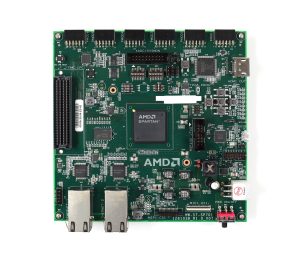
Spartan-7
Spartan-7 FPGAs are part of the Xilinx Artix-7 family and offer a cost-effective solution for low-to-mid-range applications. They are known for their low power consumption and are suitable for applications where cost, power efficiency, and moderate performance are essential. Spartan-7 devices are widely used in industrial automation, automotive, and consumer electronics.
Key Features:
• Cost-effective 28nm process technology.
• Low-power operation with an emphasis on energy efficiency.
• Ample logic resources for various applications.
• Supported by Xilinx Vivado design tools.
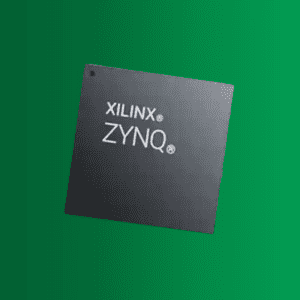
Zynq-7000
Zynq-7000 is a unique FPGA family that integrates a Processing System (PS) with a Programmable Logic (PL) section. This combination of hardware makes it suitable for applications requiring high-performance processing and customizable hardware acceleration. Zynq-7000 SoCs (System on Chip) are commonly used in embedded systems, automotive, and industrial applications.
Key Features:
• Dual-core ARM Cortex-A9 processor integrated into the FPGA fabric.
• Programmable Logic (PL) for hardware acceleration and customization.
• On-chip memory and peripherals for system integration.
• Advanced heterogeneous multi-processing capabilities.
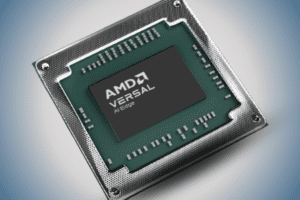
Versal
Versal is Xilinx’s latest FPGA family and represents the Adaptive Compute Acceleration Platform (ACAP). It combines FPGA flexibility with the capabilities of an application processor and AI accelerator. Versal devices are designed for next-generation applications that require high-performance processing, AI inference, and adaptive hardware acceleration.
Key Features:
• Heterogeneous integration of FPGA, AI Engines, and real-time processors.
• Versal AI Core Series optimized for AI processing and machine learning.
• Versal Prime Series for high-performance computing and networking.
• Versal Premium Series for cloud and data center acceleration.
Applications
AMD’s applications include:
Data Center Acceleration
FPGAs are increasingly employed in data centers to accelerate a variety of workloads, including artificial intelligence (AI) inference, data analytics, encryption/decryption, and compression. For AI inference, they can be programmed to perform high-speed parallel processing, making them well-suited for tasks such as natural language processing and image recognition. In the realm of data analytics, FPGAs implement custom algorithms tailored to specific processing needs, enabling efficient handling of large datasets. They also support secure operations by managing encryption and decryption tasks with low latency, and their capability to perform parallel compression and decompression improves data storage and transmission efficiency.
Their reprogrammable nature gives data center operators the flexibility to adapt quickly to evolving workload demands. As new AI models and algorithms are introduced, FPGAs can be reconfigured to support the latest advancements, ensuring continued high-performance inference. The same adaptability enhances data analytics workflows, allowing processing methods to be fine-tuned to specific business needs for better insights and faster decision-making. In security applications, this flexibility enables rapid integration of updated cryptographic standards, helping data centers stay ahead of emerging threats. As the demand for faster and more secure data processing grows, AMD’s FPGA line presents a powerful solution that drives both efficiency and innovation across critical data center functions.
Networking
FPGAs play a crucial role in networking equipment such as routers and switches, which demand high-speed packet processing and advanced traffic management. They can be programmed to operate at wire-speed, ensuring efficient data forwarding and routing. Their capabilities also support deep packet inspection (DPI), allowing networks to identify and prioritize traffic based on protocols or content. Additionally, FPGAs can implement robust security functions—such as firewalls and intrusion detection systems—to help safeguard against cyber threats. Because of their reprogrammable architecture, network operators can update FPGA configurations to meet evolving standards and protocols without replacing hardware.
Integrating FPGAs into networking infrastructure delivers significant performance and scalability benefits. Their high-speed processing alleviates data bottlenecks and boosts network throughput, maintaining smooth data flow even under peak loads. They also enable sophisticated Quality of Service (QoS) mechanisms by dynamically prioritizing traffic based on application requirements, enhancing the performance of critical services. As cybersecurity challenges grow, FPGAs offer the flexibility to deploy custom security solutions that address emerging threats and enforce strong access controls. Their adaptability also helps future-proof network infrastructure, allowing routers and switches to support new technologies without the need for costly hardware upgrades. In a rapidly evolving networking landscape, AMD’s FPGA line provides a powerful foundation for building efficient, secure, and highly adaptable network environments.
High-Performance Computing (HPC)
In high-performance computing (HPC) environments, FPGAs serve as powerful co-processors alongside traditional CPUs and GPUs, accelerating compute-intensive tasks that general-purpose processors struggle to handle efficiently. These tasks include simulations, molecular dynamics, weather forecasting, and financial modeling—all of which benefit from FPGAs’ ability to process data in a highly parallel manner. This parallelism enhances scientific computations while also reducing power consumption, making FPGA integration into HPC clusters a compelling strategy for improving both performance and energy efficiency.
FPGAs significantly benefit scientific and research communities by accelerating specialized algorithms and data-heavy workloads in time-sensitive HPC applications. Their efficiency in handling complex calculations makes them ideal for workloads that would otherwise strain traditional CPUs and GPUs. HPC clusters equipped with FPGAs consistently deliver remarkable improvements in computational throughput and power efficiency, resulting in meaningful gains in overall system performance.
Beyond raw performance, the reprogrammable nature of FPGAs allows researchers to continuously adapt and optimize their algorithms, ensuring that HPC infrastructures stay at the forefront of innovation. With the addition of AMD’s FPGA line, the potential for groundbreaking research and computation-driven advancements across scientific disciplines becomes increasingly attainable.
5G Infrastructure
FPGAs play a vital role in the deployment of 5G infrastructure, particularly within base stations and other critical network elements. As 5G introduces advanced wireless standards and complex signal processing requirements, FPGAs offer the flexibility to support multiple frequency bands and evolving communication protocols. Their ability to perform a range of tasks—such as channel decoding for rapid and accurate data processing, beamforming for optimized signal transmission and reception, and radio resource management for dynamic network resource allocation—makes them indispensable to 5G systems.
Their reconfigurable architecture allows network operators to remotely update FPGA firmware, enabling the swift adoption of new features and ongoing performance enhancements without hardware replacements. This adaptability ensures that 5G infrastructure can evolve in step with emerging technologies and shifting demands. By incorporating AMD’s FPGA line, operators gain a future-ready platform that combines high performance, agile feature updates, and advanced signal processing—unlocking the full potential of 5G and driving the next wave of communication innovation.
Image and Video Processing
AMD’s FPGA line delivers significant advantages in real-time image and video processing applications, particularly in video transcoding where it enables seamless conversion of video files across various formats and resolutions. This remarkable speed and efficiency make AMD’s FPGAs highly sought-after components in video streaming services. Their programmable nature supports the implementation of custom neural networks and advanced image processing algorithms, ensuring low latency and high throughput—key requirements for critical systems such as surveillance, autonomous vehicles, and industrial quality control. These capabilities are essential in scenarios that demand instantaneous, vision-based decision-making. Furthermore, the adaptability of AMD’s FPGAs allows for rapid deployment of specialized algorithms, enhancing security, safety, and operational efficiency across diverse industries. By transforming the landscape of real-time processing, AMD’s FPGA technology empowers organizations to unlock new opportunities and drive substantial innovation.
Key Features
AMD’s key features include:
High Performance
AMD’s FPGA line is engineered to deliver high-performance capabilities, making it a compelling choice for demanding computing tasks. The FPGAs boast advanced logic cells with efficient routing architectures, allowing for optimal parallelism and efficient data flow. The incorporation of DSP blocks enhances the FPGAs’ ability to process and manipulate digital signals efficiently. These DSP blocks can be configured to perform complex mathematical operations, filtering, and other signal processing tasks, making AMD’s FPGAs well-suited for applications in wireless communication, audio processing, and digital image processing.
Furthermore, AMD’s FPGAs feature abundant memory resources, such as embedded memory blocks and high-speed external memory interfaces. This enables efficient data storage and retrieval, improving overall performance in memory-bound applications like database management and data-intensive analytics. The combination of advanced logic cells, DSP blocks, and memory resources empowers AMD’s FPGAs to handle compute-intensive tasks with ease, delivering superior performance and responsiveness in various applications.
AMD’s FPGA line is engineered to meet the demands of high-performance computing, making it an ideal solution for complex workloads. These FPGAs integrate advanced logic cells and efficient routing architectures to maximize parallelism and ensure streamlined data flow. Integrated DSP blocks further enhance their capability to process and manipulate digital signals, supporting complex mathematical operations, filtering, and other signal processing tasks. This makes them highly effective for use cases in wireless communication, audio processing, and digital image processing.
AMD’s FPGAs include extensive memory resources, such as embedded memory blocks and high-speed external interfaces, complementing their processing power. These features enable fast data storage and retrieval, improving performance in memory-intensive applications like database management and data analytics. By combining high-performance logic, robust DSP functionality, and ample memory, AMD’s FPGAs deliver exceptional responsiveness and throughput across a wide range of compute-intensive tasks.
Reconfigurability
A defining strength of AMD’s FPGA line is its reconfigurable nature, which distinguishes it from fixed-function hardware like Application-Specific Integrated Circuits (ASICs). These FPGAs are composed of programmable logic elements that can be interconnected and configured using hardware description languages (HDLs), allowing designers to tailor the hardware structure and functionality to meet specific application needs or adapt to evolving standards.
In communication systems, this flexibility enables FPGAs to support different protocols or adopt new wireless technologies such as 5G and Wi-Fi 6. In data centers, they can be dynamically reprogrammed to accelerate targeted workloads like artificial intelligence (AI) inference and then repurposed for other tasks as requirements shift. This adaptability not only reduces costs but also extends the operational lifespan of FPGA-based solutions, making them especially valuable in fast-changing industries.
Power Efficiency
In power-sensitive environments such as data centers and mobile devices, AMD’s FPGA line is engineered to deliver high performance without compromising energy efficiency. The architecture incorporates power optimization techniques that ensure components operate effectively within tight power budgets.
One key method is power gating, which disables inactive portions of the FPGA to minimize energy usage. Another is dynamic voltage scaling, allowing the device to adjust its operating voltage in real time based on workload demands—balancing performance with power consumption. Additionally, AMD leverages advanced semiconductor manufacturing processes to further enhance energy efficiency. These capabilities make AMD’s FPGAs ideal for applications where power constraints are critical.
Scalability
AMD’s FPGA line is designed to serve a wide range of market segments by offering multiple models with varying sizes, capabilities, and price points. This scalability enables users to select the most suitable FPGA for their specific application needs, avoiding both overprovisioning and underutilization of hardware resources.
For example, in edge computing environments, where space and power are limited, compact, cost-effective FPGAs are ideal for handling real-time processing and analytics. Conversely, larger, more powerful FPGAs can be deployed in data centers or high-performance computing clusters to accelerate complex workloads and maximize throughput. This broad selection empowers users to tailor their solutions for optimal performance and cost-efficiency, making AMD’s FPGA line highly adaptable across diverse deployment scenarios.
Development Tools and Ecosystem
AMD enables efficient FPGA development through a comprehensive suite of development tools and a robust ecosystem designed for engineers and designers. Integrated Design Environments (IDEs) tailored for FPGA workflows support circuit design, simulation, and verification, offering features such as graphical design entry and built-in simulation. These tools allow users to construct complex circuits and validate functionality before implementation visually.
AMD’s FPGA ecosystem also supports a range of Hardware Description Languages (HDLs), including Verilog and VHDL, which let developers describe FPGA behavior and structure at multiple abstraction levels. To further streamline development, AMD provides pre-designed Intellectual Property (IP) cores and reusable functional blocks, reducing the need to recreate standard components. Complementing these tools, AMD offers extensive documentation, tutorials, and active online communities that encourage collaboration and knowledge sharing. This well-integrated ecosystem fosters innovation and simplifies the development of FPGA-based solutions, helping users unlock the full potential of AMD’s FPGA line across diverse application areas.
The Future of FPGAs: A New Era for High-Performance Computing
Advanced Micro Devices (AMD) has firmly established itself as a leader in the tech industry through its relentless innovation in Field-Programmable Gate Arrays (FPGAs). With a legacy rooted in semiconductor excellence, AMD continues to deliver powerful, flexible FPGA solutions designed to meet the demands of diverse sectors. These devices are revolutionizing real-time processing, boosting system performance, and powering everything from AI to edge computing.
Looking ahead, AMD’s FPGAs are poised to transform how industries approach high-performance computing, with promising implications for artificial intelligence, data centers, telecommunications, and more. Their ongoing advancements ensure they remain pivotal to the next generation of intelligent systems.
At Microchip USA, we support engineers and OEMs who rely on cutting-edge FPGA technology by offering a wide inventory of AMD components—available, traceable, and ready to ship. Whether you're building the future of AI or optimizing high-speed networks, partner with us to find the right FPGA solution for your application.
Explore our FPGA offerings and accelerate your next innovation with Microchip USA. Contact us today!